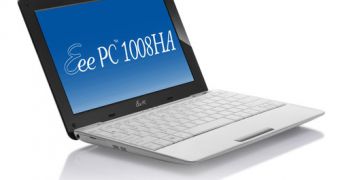It appears that the speed at which the netbook market is developing might be turned down a notch, as rumors surface that the two leading netbook vendors aren't planning any new models before the end of this year. According to recent reports on the Internet, neither Acer nor ASUSTeK are going to roll out any new designs for their netbook lineups, concentrating on new ultraportable laptops featuring display sizes starting from 12 inches. One of the reasons behind this decision is that both companies are waiting for the release of Intel's much-anticipated Pine Trail-M platform, which has been rescheduled for the first quarter of 2010.
According to industry sources cited in a recent news-article on Digitimes, ASUSTeK Computer and Acer, the two netbook pioneers and leading vendors of netbook PCs, have decided to maintain their current netbook portfolio and focus on new designs for the ultra-thin, ultraportable laptop segment for the second half of this year.
ASUSTeK still has plans to roll out the touchscreen-enabled Eee PC T91 and T101, along with the Android-based netbook, all of which are scheduled to arrive in the second half of this year. According to the aforementioned source, the T101 is to arrive after the launch of Microsoft's much-appreciated Windows 7 operating system, while the anticipated Android netbook will make its appearance before the end of October. Acer will continue with its line of 10-inch Aspire One netbooks, and is said to be considering a reduction of its budgets for netbook marketing and R&D. The company won't be releasing the rumored dual-OS netbook featuring Windows XP and Android this August.
Both manufacturers will focus on their new 12-inch, 13.3-inch and 15-inch ultra-thin laptops, with ASUS expecting the 13.3-inch model to become a considerable success. Acer’s ultra-thin lineup includes systems featuring 13.3-inch, 14.1-inch and 15.6-inch displays, but the company is planning to launch new models with discrete graphics and integrated optical drive, granted there's a market demand for such systems.

 14 DAY TRIAL //
14 DAY TRIAL //